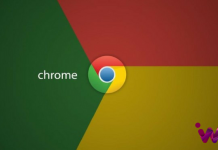Google is generally recognized as one of the most important names in the tech game and the world in general. The company has been on the market for quite some time, and it managed to thrive by perfecting its products with each passing year. One simple, yet widely attesting example of this has to do with its famous logo that is familiar at a global scale.
About the Google Logo
What has made the Google logo so easily recognizable in its over two decades of existence is the fact that it always revolved around a few key aesthetic principles? By taking a look at the Google logo design history, you will quickly notice that yourself. Over the years, the now iconic layout stayed more or less in its own lane, while experimenting with change at the same time.
This is, without any shred of doubt, a difficult thing to pull off even for a company as gigantic and notorious as Google. The very first iteration of the logo came about once co-founders Sergey Brin and Larry Page launched the company in 1997, and it went through its first makeover just one year later, in 1998.
In fact, the 1998 outline is what most people today identify as the original Google logo. It was a similar model to the one used by the company today, but it was a lot rougher around the edges from a modern perspective. Of course, this is to be expected, as graphic and web design technology was far less advanced and elegant back then.
Subtle changes have been added to the design ever since. The project has always been overseen by Ruth Kedar, a brilliant graphic designer that Page and Brin met at Stanford University in 1999. The trio hit it off immediately, and they have been collaborating on this aspect of the company’s presentation ever since.
By keeping in tune with the initial simplicity of the design and tweaking fonts and color palettes ever so slightly, Kedar always managed to give the logo a fresh makeover every now and then. The logo that is currently present on the Google homepage was created in 2015, and it features a classic sans serif typeface with a playful twist.
The color palette has remained the same over the course of the last decade. On the one hand, the G’s and O’s are clad in primary colors of blue, red, and yellow, and so is the final E. The L on the other hand, makes a beautifully discordant note, as it is green.
This idea came about in 2008, when Kedar decided upon this design as a testament to how Google isn’t afraid to step out of its comfort box and not play by the rules. Fonts have come and gone, and so did shading, but it seems that this color palette is here to stay. And yet, who knows what the next update will bring?
Why Is It So Successful?
As mentioned above, the official Google logo that we all know and love thanks to the search engine’s homepage has been through many reiterations over the course of the last two decades. So, how did something that went through almost continuous change manage to remain recognizable in more than 20 years of existence?
The answer is simple. In spite of its many makeovers, the Google logo always followed the same basic principles in terms of positioning, fonts, colors, and overall outline. For one, the fonts used to spell out the company name have never changed drastically. They have always been utilitarian, clean, and minimalistic in nature. Nobody woke up one day and decided to use cursive French Script, or even worse, Webdings. The same is true for the color palette used in most of the designs. With a few exceptions, the shades stayed in the same lane.
This created a product that is dynamic and fresh, yet coherent. Google never tried to blow people’s minds with a completely new and drastically different design. It merely built upon a successful foundation and added subtle hints of elegance with each change. All in all, the logo is so successful because it followed the tried and tested principle of “if it ain’t broke, don’t fix it.”
The Bottom Line
The very first iteration of the famous Google logo was created more than 20 years ago, and it has been following a similar design path ever since. Due to this continuity, it managed to stay successful among members of the general Internet-consuming public, as it never changed too drastically to cause an uproar or any other kind of negative reaction.



![[Case Study] EduKart: Shop The Right Course By Carting It](https://www.whizsky.com/wp-content/uploads/2019/02/EduKart-218x150.png)
![[Case Study] How OnePlus Made It To Top In Indian Market](https://www.whizsky.com/wp-content/uploads/2019/02/oneplus-became-premium-brand-in-India-218x150.jpeg)








